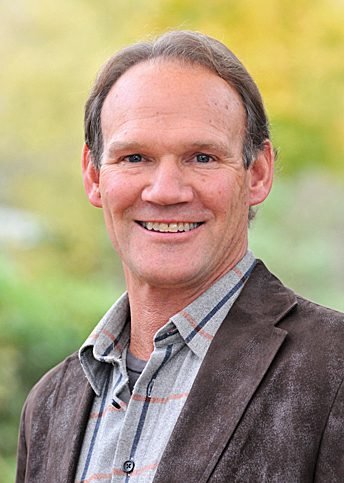
ANGELO LYNN
Here’s the only good news about the bad news concerning Vermont’s health care system — it’s so bad reform can’t wait. We absolutely must make substantial changes and do it quickly.
That’s the kernel of hope in what was an otherwise sobering look at the state of Vermont’s health care system as presented by Dr. Bruce Hamory’s team of consultants (Oliver Wyman’s Health and Life Sciences Practice) on Tuesday night at Middlebury’s Ilsley Library. Hamory’s team was hired by the state to assess the system’s needs.
It’s not new news. Anyone who has been paying attention knows Vermont’s health care costs have exploded over the past few years.
Still, the numbers are staggering:
- Nine of the state’s 14 hospitals posted negative operating margins in 2023 (Porter was one of the few in the black).
- Monthly health insurance premiums for the lowest cost Silver marketplace plan between FY2018 and FY2022 increased 108%, from $474 to $948. Medium household income during the same period rose 22%, from $60,781 to $73,991.
- It gets worse: Vermont’s aging population will become more reliant on expensive health care as the percentage of older residents increases while working age Vermonters make up an ever-smaller share of the population. Today, 12.4% of the state’s population is 65-74 years old; by 2040, it’s expected to be 24.4%. Meanwhile, those 20-64 currently make up 53.8% of the population, but by 2040 that percentage will drop to 40.3. That trend will send commercial insurance rates through the roof (even more than they already are).
- Nor can we blame health insurance companies for hiking rates. Data suggests insurance companies have been facing big losses in recent years. BlueCross-BlueShield reportedly lost 46.8% in FY2022, and 24.8% in FY2023, and insurance companies are required by the state to maintain a sufficient cash buffer to be able to afford claims filed. It’s why state regulators will likely approve more health insurance rate hikes.
Doing nothing, Hamory told the jammed-packed community room at the library, is not an option. Vermonters simply can’t afford such annual increases.
So, what’s the solution?
It’s complicated.
Basically, we have to redesign a system specifically suited for today’s needs and Vermont’s unique demographics; unique because we are this rural, aging state where this point of inflection demands change; and demands it now.
What that means, in part, is addressing some big societal problems:
- We must have more affordable housing, so we can create a bigger workforce and ensure workers for our health care system, along with solving a host of other issues;
- We need more assisted living, nursing and other group homes for Vermont’s aging population;
- We must create new pathways for appropriate levels of care, more recovery options and treatment from home; greater use of telemedicine, data and the like that reduces cost.
And on and on.
In a 32-page report, Hamony laid out the problem, explained the basis of a recovery plan, and encouraged the greater-Middlebury community — as well as the rest of the state where similar presentations have been made — to get involved and use political “pressure” to force the change. (A more detailed report and suggestions will be presented later this fall.)
The proposed changes, Hamory said, “will require concerted system transformation, sustained over time… an unrelenting effort.”
If you’re thinking this sounds like a Mission Impossible movie, it is daunting.
But if we break it down community by community it seems more realistic.
- The Middlebury area is on track to put in 100 units of affordable and workplace housing with the Summit Properties project that was started two years ago. A town task force could seriously consider how we might attract more assisted living or other group homes (is a subsidy possible?), as well as other measures to ramp-up smaller housing developments, including tiny houses for young families. We need to do that planning now and put community resources together to make it happen.
- Porter Hospital has already addressed many of the cost-saving steps that can be realized through consolidation and shared resources, is working on providing more specialty services closer to home to limit costs to patients, and the hospital works well with the relatively large number of other health care related services in the county. Can we work within those systems to expand preventative services to limit the need for more expensive care in our hospital system?
- Our local career centers, as well as the state college system, are incorporating health-care related classes and programs into their curriculums, but can we do more and do it better?
In short, these aren’t the types of obstacles that make a Mission Impossible movie sizzle. There are viable solutions. But it will take a “concerted” and “sustained” effort by every community-center in the state, and there will be substantial debates on how that change happens without upsetting some of the very providers we need serving in their highest capacity with adequate reward.
It won’t be easy, but the pressure isn’t going away.
Owen Foster, who grew up in Middlebury and is the chair of the Green Mountain Care Board, aptly captured the scale of the problem: “In a nation with some of the worst healthcare costs in the world, Vermont stands out as one of the states with the highest healthcare costs in the country.” But he offers this glimmer of hope: “This is dour and concerning, but I also want to say it’s an immense opportunity… We’re able to pause right now and look at what we have and look at what we need and intentionally design a system that will work for us.”
The GMCB has taken the first step with this study. The next step is harder: outlining a path forward that offers tangible rate relief. If it can do that, we’re confident Vermonters will apply the pressure to make it happen.
Angelo Lynn


